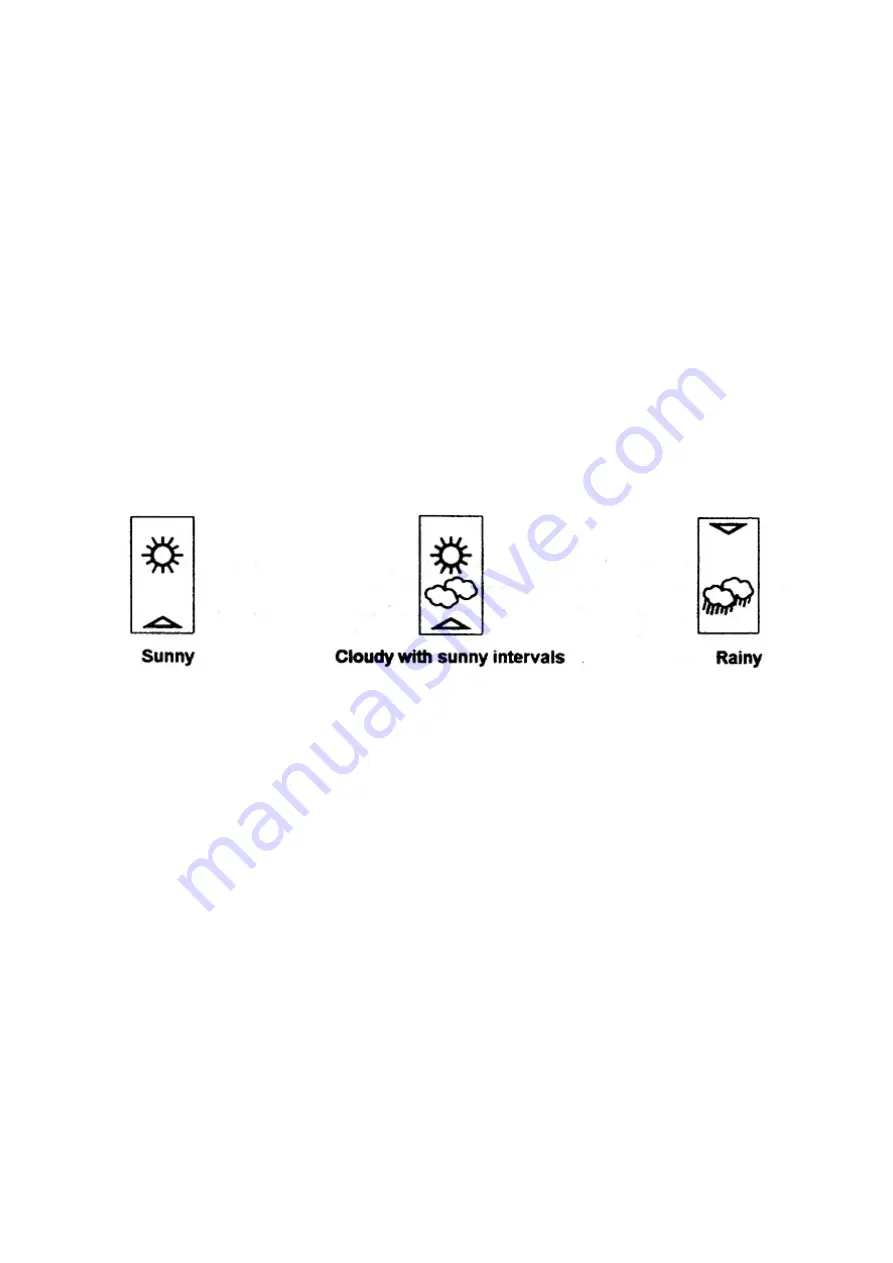
TIME SETTING:
1. Press the "SET" key to enter the Time setting mode. The hour's digit will start flashing.
2. Use the "+" key to set the hours (each press will increase the digits by one).
3. Press the "SET" key to move into the minutes setting. The minute's digits start flashing.
4. Use the "+" key again, set the minutes (each press will increase the digits by one).
5. Press again the "SET" key to exit the Time Setting mode and to normal display.
Using the Weather Station:
Once the time is set, it will be kept by an accurate LCD clock in 24-hour time display.
Located between the hours and the minutes is a flashing "." Each flash represents the
passing of one second, but more importantly, it demonstrates that the Weather Station's
entire LCD screen is powered and operating.
Indoor Temperature Reading:
The indoor temperature display is under the time section of the LCD and is automatically
measured once the batteries are inserted.
Weather tendency icons
Underneath the indoor temperature reading is the weather icons for forecasting the weather
over a 6 to 12 hour period. The weather icons can be displayed in the following
combinations:
For every sudden or significant change in the air pressure, the weather icons will update
accordingly to represent the change in weather. If the icons do not change, it simply means
either:
1) the weather has either not changed or
2) the air pressure has not changed or the change has been too slow for the Weather Station
to register.
The icons displayed forecasts the weather in terms of getting better or worse and not
necessarily sunny or rainy as each icon indicates. For example, if the current weather is
cloudy and the rainy icon is displayed, it does not mean that the product is faulty because it
is not raining. It simply means that the air pressure has dropped and the weather is expected
to get worse but not necessarily rainy.
After setting up, readings for weather forecasts should be disregarded for the next 12-24
hours. This will allow sufficient time for the Weather Station to collect air pressure data at a
constant altitude and therefore result in a more accurate forecast.
Common to weather forecasting, absolute accuracy cannot be guaranteed. The weather
forecasting feature is estimated to have an accuracy level of about 75% due to the varying
areas the Weather Station has been designed for use in. In areas that experience sudden
changes in weather (for example from sunny to rain), the Weather Station's will be more
accurate compared to use in areas where the weather is stagnant most of the time (for
example mostly sunny).







